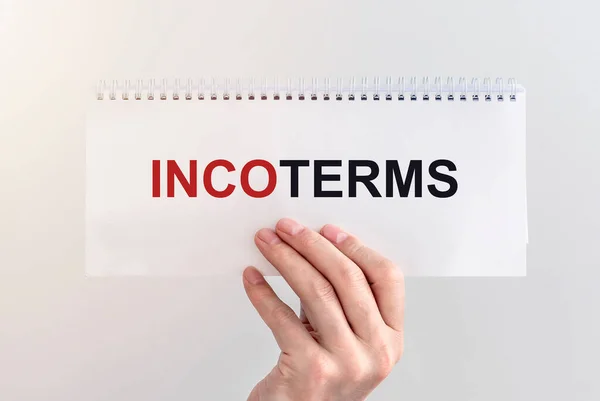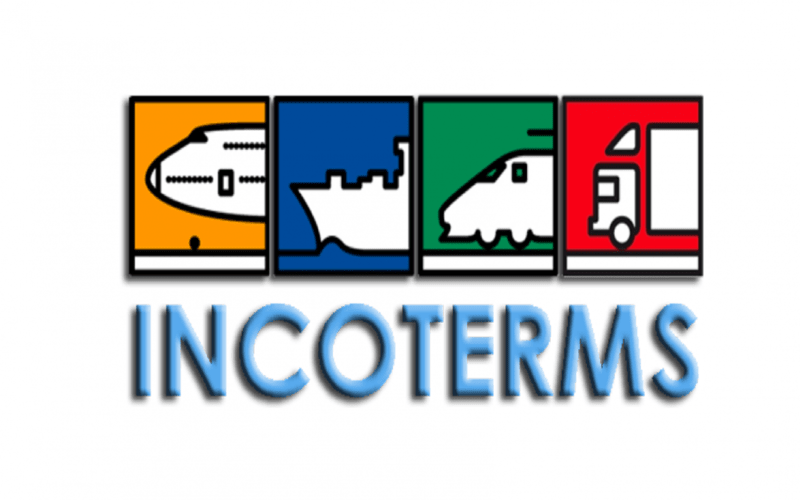INCOTERMS CARRIER
- ICAO(International Civil Aviation Organization): International Civil Aviation Organization
- CONVENTION OF WARSAW: The protocol on international carriage by air was signed between several countries, including Turkey, in 1929. In 1955, it was amended by The Hague Protocol. It consists of 41 articles.
- CARRIER: the carrier, Airline
- FORWARDER: Organizing firm that conducts the operation of the land route, airline, and railway carriage, as well as related insurance services through an active network of agencies
- AIRWAYBILL: Air consignment note
- Master AWB / House AWB: Main consignment / Intermediary consignment.
- CASS (Cargo Account Settlement System): System to monitor accounts between CASS member airlines and their IATA cargo agencies.

EX WORKS (EXW) /DELIVERY AT COMMERCIAL ENTERPRISE
“Ex works” means the seller fulfills delivery obligation by keeping the goods at its workplace (factory, storehouse, etc.) for the purchaser. Unless otherwise agreed, the seller is not responsible for loading the goods to a vehicle provided by the purchaser or for clearing the goods through export customs. The buyer undertakes responsibility for any expenses and risks about the carriage of goods beginning from the workplace of the seller until the destination. This type of sale comprises the least liability for the seller among all other methods. Only the packaged goods are included within the sale price indicated under the contract in this delivery type. In other words, as of the delivery date, the buyer covers all expenses with regard to transport, loading, unloading, and insurance.

FREE CARRIER (FCA) / DELIVERY TO CARRIER
In this type of delivery, the delivery liability of the seller ends once the goods are cleared through export customs and delivered to the prescribed carrier at the prescribed site or point.
In case the buyer has indicated no precise place of delivery, the seller may determine a site near where the carrier will receive the goods. In case commercial applications require assistance by the seller for the establishment of a contract with the carrier (e.g. in railroad and airway carriage), the seller may act in such a manner that all risks and expenses are covered by the buyer.

FREE ALONGSIDE SHIP (FAS)
“Free Alongside Ship” means the seller delivers the goods when they are placed alongside a ship at the prescribed port of loading. As of then, the buyer undertakes any expenses, damages, or losses, as well as relevant risks about the goods.
FAS requires customs clearance of goods by the seller for exportation. point. In case the buyer has indicated no precise place of delivery, the seller may determine a site near where the carrier will receive the goods. In case commercial applications require assistance by the seller for the establishment of a contract with the carrier (e.g. in railroad and airway carriage), the seller may act in such a manner that all risks and expenses are covered by the buyer.

IT IS THE OPPOSITE OF PREVIOUS INCOTERMS VERSIONS THAT STIPULATE FULFILLMENT OF CUSTOMS CLEARANCE PROCESSES FOR EXPORTATION BY THE BUYER.
Nevertheless, in case the parties agree that the buyer will carry out customs clearance of goods for exportation, such conditions should be explicitly indicated within the contract of sale.
This term applies only to sea or inland transport.

FREE ON BOARD (FOB) / DELIVERY ON BOARD
In this method, the seller is considered to have fulfilled its liability of delivery once the goods reach the ship’s rail at the prescribed port of loading. From then on, the buyer undertakes any expense, loss, damage, or risks about the goods. In case the ship rail signifies nothing in practice (such as in roll-on/roll-off or container carriage), the term FCA will be more appropriate to employ

COST AND FREIGHT (CFR)
In this method, the seller has to pay all relevant costs and freight in order to dispatch the goods to the prescribed port of destination. Nevertheless, any loss and damage risks as well as possible rise in expenses with regard to goods are handed over from seller to buyer once the goods attain the ship’s rail at the port of loading.
CFR signifies that the seller should clear goods through customs for export.

FREE ON BOARD (FOB) / DELIVERY ON BOARD
In this method, the seller is considered to have fulfilled its liability of delivery once the goods reach the ship’s rail at the prescribed port of loading. From then on, the buyer undertakes any expense, loss, damage, or risks about the goods. In case the ship rail signifies nothing in practice (such as in roll-on/roll-off or container carriage), the term FCA will be more appropriate to employ

DELIVERED EX QUAY(DUTY PAID) (DEQ)
In this method, the delivery responsibility of the seller ends once the goods are rendered disposable at the prescribed location in the importing country. The seller has to undertake any risks and expenses with respect to the carriage of goods to such location and to fulfillment of necessary customs procedures (except for taxes, levies, and duties payable for import). The buyer has to cover additional expenses and risks due to goods not cleared from customs for import in due time. In case the parties want the seller to fulfill customs procedures and undertake all possible relevant expenses and risks, they have to concretize such intention through well-articulated expressions. In case the parties want to add to the liabilities of the seller certain expenses necessary for the importation of goods (such as VAT), they have to concretize such intention through well-articulated expressions. This term can be employed regardless of mode of transport.

DELIVERED DUTY UNPAID (DDU)
In this method, the delivery responsibility of the seller ends once the goods are rendered disposable at the prescribed location in the importing country. The seller has to undertake any risks and expenses with respect to the carriage of goods to such location and to fulfillment of necessary customs procedures (except for taxes, levies, and duties payable for import). The buyer has to cover additional expenses and risks due to goods not cleared from customs for import in due time. In case the parties want the seller to fulfill customs procedures and undertake all possible relevant expenses and risks, they have to concretize such intention through well-articulated expressions. In case the parties want to add to the liabilities of the seller certain expenses necessary for the importation of goods (such as VAT), they have to concretize such intention through well-articulated expressions. This term can be employed regardless of mode of transport.

DAP HAS REPLACED PREVIOUS DAF, DES AND DDU
The “Delivery at Place” rule signifies that the seller delivers the goods to the disposal of the buyer once the vehicle arrives at the prescribed destination and without unloading them from such vehicle. It means provision (delivery) of goods to the buyer at a certain point so as to be unloaded from the transport vehicle. DAP has replaced previous DAF, DES, and DDU methods. In other words, DAP means the goods are left to the disposal of the buyer at the transport vehicle at the unloading location (a port quay, customs point, airport) and are ready for unloading, pursuant to the prior agreement between buyer and seller. Buyer covers all customs procedures, expenses, as well as customs-related taxes, levies and duties. Seller undertakes costs and terminal connection damage risks during the transport of goods to the prescribed location. On 27 September 2010, ICC issued and updated these rules under Incoterms 2010. The revision came into effect on 1 January 2011. In Incoterms 2010, the number of delivery modes decreased from 13 to 11. Four modes are removed, while two new delivery types are established. Besides, INCOTERMS are divided into two general categories. The rules, which cover all transport types, are divided into seven, namely, EXW – FCA – CPT – CIP – DAT – DAP – DDP; whereas FAS – FOB – CFR – CIF are grouped as “exclusive rules for seafreight and inland transport”, with essential amendments in their content.


